By; Senalankara perera
Take a look at these crazy cameras and camera lenses! If you’ve got a big budget and aren’t shy about letting the world know you’re a pro photographer then these are for you
There are several categories of camera gear available: there's the sensible, the desirable and then there's the stuff that you'd never even imagined. Here's a selection of equipment that most definitely belongs in the latter category.
Sigma APO 200-500 F/2.8
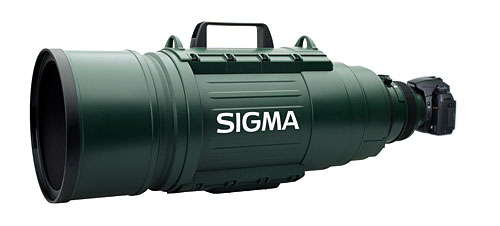
Image: Sigma
Perhaps the most "sensible" of the items presented in this list, this is nevertheless one of the heftiest tele zoom lenses for SLR cameras around. While the zoom range of 200-500mm is nothing new or exciting, it's the maximum aperture of an incredible f/2.8 throughout the focal range that makes this such a special lens.
While a lot of tele lenses have a distinct cannon barrel look, Sigma have apparently done all they can to enhance that trait, giving the lens a leafy green finish. The end result is an extremely fast tele zoom lens that could easily be confused with a surface-to-air missile launcher.
Zeiss Apo Sonnar T* 1700 mm F4

Image: Zeiss
For people who have been into photography for a while, the name Carl Zeiss means top of the line optical quality, usually with a matching price tag. While continuing to produce their top-of-the-line optics for various camera systems, Zeiss have more recently also begun cooperating with Nokia and Sony, making optics for their mobile phones and digital cameras.
Two years ago, the company presented a remarkable one-off tele lens, reportedly custom built for a wealthy Qatari. Weighing in at 256 kilos, it's is a 1700mm f/4 lens designed for medium format (which roughly equals 750mm in 35mm SLR format). The monster bears more than a fleeting resemblance to a jet engine; given the size the 'super tele lens' labeling on the side seems a little superfluous – it isn't very likely that it would be mistaken for an average 70-200mm, after all.
The little black lump at the end is your average 6x6 medium format camera, in itself a quite bulky piece of equipment, but completely dwarfed by the Zeiss lens. Upon it's unveiling, it was said to be the largest non-military tele lens in the world. One wonders what the largest military tele lens might look like.
Drawing from their experience in manufacturing large telescopes and instruments for astronomical sciences, Zeiss had to develop an entirely new focussing system, Due to the massive size of the glass elements, the lens had to be equipped with extremely powerful focussing motors, capable of moving all that heavy glass around. The rear end of the lens has a dedicated LCD monitor built in to display focussing distance, aperture etc. No price has been published, but Zeiss hinted at a price of at least several million Euros.
The intended use for the lens is reportedly "antelope photography". This doesn't immediately strike one as the kind of kit you want to bring along on a safari to photograh fast moving and easily startled animals – hiding in the bushes is certainly off the agenda – but the uncompromising construction is said to allow the lens to autofocus as fast as a 'regular' telephoto lens.
Polaroid 20x24'' Camera
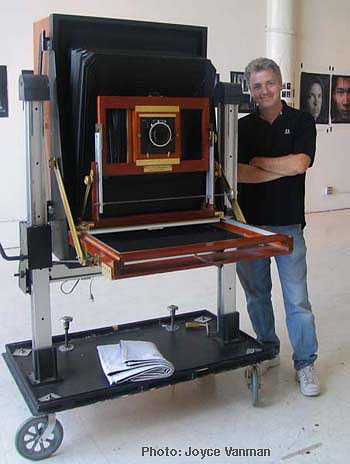
The average film camera has for the last 50 years used either 120 rollfilm or so-called 135 film, 135 being by far the most commonly used type. Each frame of 135 film is 36x24 milimeters, while the average consumer dSLR camera today has a sensor size of approximately 60% of this, around 23x15 milimeters. The sensors in digital compacts are much smaller still. Within this tiny space, the camera and its lens has to compress the vast amount of detail visible to the human eye. The resulting replications of reality are far from perfect, they can't be.
One way of partially overcoming this problem is quite simply to use larger film formats or digital sensors. Within the digital realm, the 48x36mm sensor size available in certain medium format digital backs is pretty much as large as it gets without substantial R&D resources (like what a major corporation, national government or army might have at their disposal).
In film, things are a bit simpler. While constructing huge digital sensors is a challenging task, creating a huge sheet of film or photographic paper is really – simply put – just a matter of making it bigger than usual, and building a camera large enough to house it.
The biggest 'instant' camera I know of is Polaroid's 20x24'' behemot. It's 1.5 meters tall and weighs in at 106 kilos. The Polaroid paper sheets used in this camera is, as the name implies, 20 x 24'', which equals 50x60 cm. Keeping in mind that the aforementioned 135 film is a mere 3.6 x 2.4 cm, it's easy to see why such a larger-than-life camera would be capable of producing prints of far superior detail compared to smaller formats.
A number of these cameras are available for hire, complete with a dedicated studio space, in San Fransisco, New York and Prague. Following Polaroid's recent announcement that they will completely cease the production of their signature instant film, there is a certain risk that these cameras will be destined for the museum soon.
Seitz 6x17'' digital panoramic camera
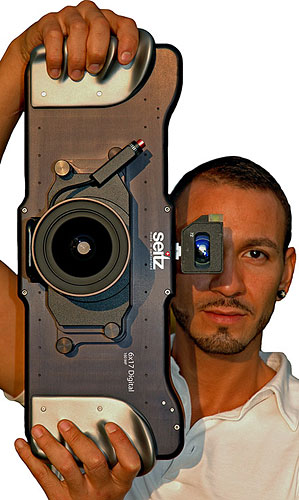
Image: Seitz
Instead of the common digital camera sensor which records the entire scene at once, the Seitz 6x17'' uses a scanner to literally scan the view through the lens. The end result is 160 megapixel images in a panoramic format. It does the job a bit faster than your average flatbed scanner though, recording a full-sized frame (21 250 x 7500 pixels) in two seconds. It's big, it's heavy (5 kilos if you wish to use it outside a studio) and quite silly, but it turns out huge, amazing photos – and it should, costing as it does $42 000.
Hasselblad H3DII
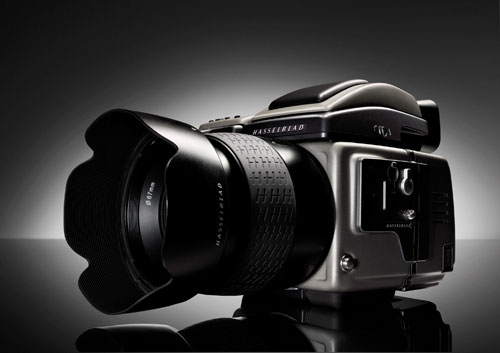
Image: Hasselblad
Swedish camera manufacturer Hasselblad (or "'blad" as they are often called) has for a long time been ranked among the very best when it comes to cameras. Indeed, NASA's space programme chose Hasselblad as their camera provider, and three Hasseblads where carried aboard the Apollo 11 mission, perhaps the company's most famous feat.
Priced at around $40 000, a Hasselblad H3DII with a 39 megapixel backpiece is one of the most expensive photo kits available in ordinairy retail sale. It's fairly large, fabulously expensive and capable of creating huge, extremely detailed image files with its 39 megapixel, 48x36mm sensor.
For photographing your cat, you can probably make do without this camera, but if you're shooting supermodels for Vogue, you might just need a camera of this caliber. If you ever watch TV shows like "Top Model", there's a fair chance you'll see a 'blad involved in a shoot every now and then.
Canon EF 1200mm f/5.6L USM
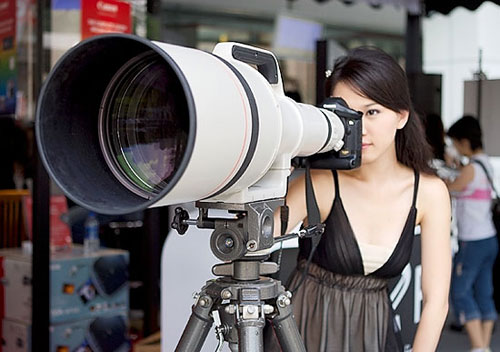
Image: Robert
While the 1700mm lens mentioned earlier is all fine and dandy if you've got a truck to mount it onto, some may prefer a more lightweight, nimble sollution. Weighing a mere 16.5 kilos and being only 83 centimeters long (without the bucket-like hood), this delicate little flower will nevertheless magnify faraway objects (or perhaps more relevant, faraway people) to a degree that will leave little to the imagination. To my knowledge, this is the longest focal length available to autofocus SLR cameras without using any extra magnifiers.
Due to its size, limited area of use and robust price tag, it has only been available from Canon built to order, and to date they have apparently produced fewer than 20 samples of this lens. The company recently announced that they would be slashing the 1200mm from their catalogue, so if you want one, better be quick about it.
The suggested price of the lens upon unveiling in 1993, converted to present day money puts it at apx. $120 000, or the cost of "a small sports car" which is the most common price comparison given for the lens.
The Gigapxl Project
Launched by physicist Graham Flint, the Gigapxl Project set about creating a camera system that would allow the creation of photos with billions of pixels (or thousands of megapixels if you like). The Gigapxl Project employs a large format camera with 9x18'' film sheets to shoot big panorama photos of places of interest, primarily in the USA.
The film sheets are then scanned using a highly sophisticated technique, resulting in digital files that contain the equivalent resolution of several gigapixels. Though the original aim was to reach a single gigapixel (1000 megapixels), the project website now claims it is able to create images with a resolution of aproximately 6 gigapixels.
Nowadays, camera manufactureres like to stick very dense sensors into tiny consumer cameras with mediocre optics, which results in images that despite the 12 or 14 megapixel resolution aren't really any better than 4 megapixels. It's a way of cheating customers who don't know much about digital photography as most people seem to think that more megapixels equals better photos, which is a truth with great limitations.
It would be easy to think that the Gigapxl Project is much the same, just a whole lot of pixels wasted on creating huge digital files that contain little in terms of actual details. However, at the project website, it's made very clear that the technology and knowledge put into these photos means that the 2, 4 or 6 gigapixel photos they produce are in fact as detailed as their pixel size suggests. But why take my word for it? Check out the amazing images in their gallery for an idea of what I'm talking about!
Cameratruck

Image: Cameratruck
A pinhole camera is perhaps the simplest kind of camera there is. You make a tiny hole in an otherwise light-sealed container, but in a sheet of film or other photo-sensitive media, point it towards what you want to photograph and let light pass through the hole for a set period of time. The reflected light will, just like the light reflected through the lens of an ordinairy camera result in a photo, be it through a digital sensor or on a piece of film.
Pretty much any container can be made into a pinhole camera; the more outlandish the better – the Pringles Cam,Spam Cam and Trashcan Cam are just a few examles I've seen.
But it could also be built out of a box truck, which is exactly what an inventive bunch of spaniards and americans did. By drilling a hole in its side and attaching huge sheets of photographic paper (100x30 cm) to the inside of a truck, they created a huge mobile pinhole camera.
"The Great Picture"
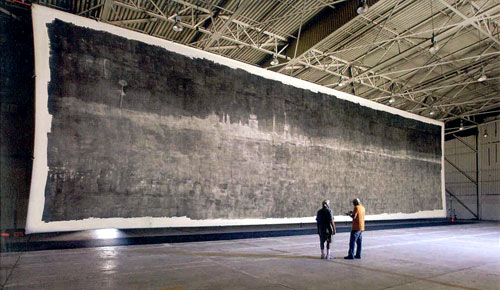
The photographic canvas of "The Great Picture"
Image: The Legacy Project
But why stop at a truck, when you could convert an entire airplane hangar into a pinhole camera? While the Cameratruck above is touted as the world's largest mobile camera, this hangar is certified by the Guinness Book of Records as the largest camera in existance, albeit immobile.
It's basically an old hangar building at the disused El Toro Marine Corps Air Station in Southern California, which has been made light tight to ensure no light gets in except through the little pinhole in one of the hangar's sides. To create the image alluringly described as "The Great Picture", a huge sheet of made-to-order canvas was suspended inside the hangar and coated in 80 litres of Liquid Light, making it photosensitive.
The exposure time of the world's largest camera was set to aproximately 35 minutes, after which the canvas was chemically developed (in a pool of 2300 litres of developer – photography at this scale does not come cheap!) into the world's largest photo, 313 square meters (3375 square feet) in size.
Compare that to a standard 135 film frame, which you might remember from earlier on in the article is 36x24 milimeters, equalling 8.64 square centimeters, or 0.00864 square meters.